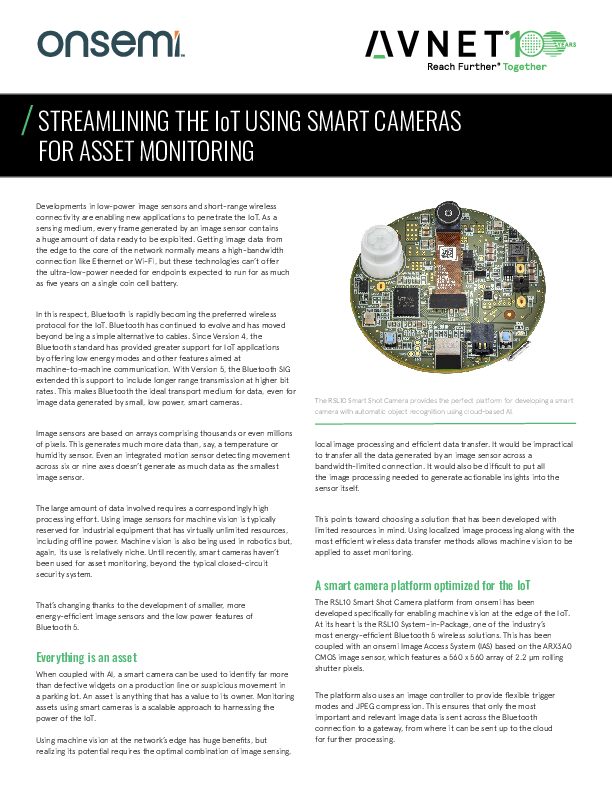STREAMLINING THE IoT USING SMART CAMERAS FOR ASSET MONITORING
Developments in low-power image sensors and short-range wireless connectivity are enabling new applications to penetrate the IoT. As a sensing medium, every frame generated by an image sensor contains a huge amount of data ready to be exploited. Getting image data from the edge to the core of the network normally means a high bandwidth connection like Ethernet or Wi-Fi, but these technologies can’t offer the ultra low-power needed for endpoints expected to run for as much as five years on a single coin cell battery.
In this respect, Bluetooth is rapidly becoming the preferred wireless protocol for the IoT. Bluetooth has continued to evolve and has moved beyond being a simple alternative to cables. Since Version 4, the Bluetooth standard has provided greater support for IoT applications by offering low energy modes and other features aimed at machine-to-machine communication. With Version 5, the Bluetooth SIG extended this support to include longer range transmission at higher bit rates. This makes Bluetooth the ideal transport medium for data, even for image data generated by small, low power, smart cameras.
Image sensors are based on arrays comprising thousands or even millions of pixels. This generates much more data than, say, a temperature or humidity sensor. Even an integrated motion sensor detecting movement across six or nine axes doesn’t generate as much data as the smallest image sensor. That’s changing thanks to the development of smaller, more energy-efficient image sensors and the low power features of Bluetooth 5.

